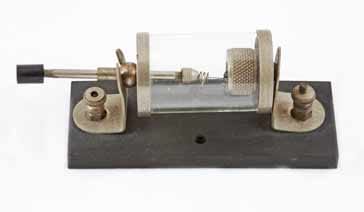Development & History of Semiconductor Technology
Semiconductor technology now enters every area of modern life, but it has taken many years and a vast amount of research by many people to get to where we are today.
History of Semiconductor Technology Includes:
History of semiconductor technology development
More semiconductor history
PN junction diode invention
Transistor history
Invention of the integrated circuit
It is not easy to give a start data for the story of the development of semiconductor technology. Like most inventions and developments, foundations need to be set in place, and then there are many steps along the way to the final discoveries and inventions.
The history of the development of semiconductors has involved a vast number of people. Some are names we know well, but there are many more whose work has gone unnoticed in the background. Their contributions have been valuable and in their own way, they have enabled the technology behind semiconductors to move forwards to reach the place where we are today.
Early findings
In the early days of electrical science there were many reports of materials, which we now know to be semiconductors, that exhibited unusual effects.
One of these was the crystal diode that was used in early wireless receivers. A host of different materials were used, and a small point contact created by a thin wire, often referred to as a Cat's Whisker was used to create the diode junction.

Often the whisker position had to be changed several times before a good contact was made that would provide the rectifying action needed.
The action of the cat's Whisker was to create a point contact diode that would rectify the incoming radio signal. This was used to demodulate the amplitude modulated signal.

Theoretical foundations laid
Around the 1920s and early 1930s a lot of scientific and mathematical research was being undertaken to understand the molecular and atomic structure of materials. Interestingly the motivation for a lot of this work was to improve the vacuum tube/ thermionic valve technology.
The work lead to a much greater understanding of not only vacuum tube technology, but it also provided a much greater level of understanding of atomic physics and the way in which atoms behaved in various mediums. This was of tremendous importance when it came to investigating semiconductor materials.
in fact this work paved the way for much of the later work on semiconductor devices.

First transistor
The team that ultimately developed the first point contact transistor, were actually aiming to develop a field effect device, but could not get it to work. After many attempts they finally admitted defeat and started to look into other devices, finally settling on what ultimately became the first transistor - a point contact transistor.
Silicon transistor developed
Initially all transistors were manufactured using germanium. This was because there were significant issues refining silicon to a sufficiently high degree.
At a conference on transistor device technology held by the Institute of radio Engineers in Dayton Ohio, USA, speaker after speaker was talking about the difficulties of working with silicon, and the consensus was that it would be several years before silicon transistors were feasible.
However Gordon Teal from the newly formed and little know Texas Instruments, got up to speak and told them he had a few silicon transistors he had made in his pocket.This took everybody by surprise and firmly put Texas Instruments on the map, and several years ahead of the competition.
Field effect transistor developed
Although the standard bipolar and point contact transistors had been invented, and these devices had been very successful, it is probably true to say that the field effect transistor has had a much greater effect on electronics. The field effect transistor concept had been known about for many years, but had proved harder to create real devices. However when they arrived, they could be incorporated into integrated circuits and the much lower power consumption they enabled opened the door to very large scale integration.
Invention of the integrated circuit
It had long been understood that the traditional manufacturing techniques for electronic equipment were very time consuming, and not particularly reliable. As a result, investigations started into seeing how a much better approach could be developed.
Initially concepts like the introduction of printed circuit boards were investigated.
Later ideas about placing more than one device on a semiconductor chip were investigated.
Two men are credited with having invented the integrated circuit: Jack Kilby for actually making one during a summer shutdown at Texas Instruments. Having only just joined the company, he did not have sufficient annual holiday to take, so he worked on during this period, developing the very first integrated circuit.
Also, parallel work was undertaken at Fairchild where Robert Noyce set in place the foundations for mass production.
Semiconductor technology has come a long way since the very first phenomena were noticed with a group of elements that were neither quite conductors nor insulators. From the initial observations, the properties of many different semiconductors ahve been utilised in many different ways. Some to produce exceedingly complicated integrated circuits that enable modern computing and automation technologies to work, while others have been used to enable modern communications technologies to use frequencies that could not be conceived before. Of course there is a huge number of other uses to which semiconductor technology has been put, which we often take for granted, but only realise how far technology has moved when looking ay old films, or in museums and other similar places.
 Written by Ian Poole .
Written by Ian Poole .
Experienced electronics engineer and author.
More History:
Radio history timeline
History of the radio
Ham radio history
Coherer
Crystal radio
Magnetic detector
Spark transmitter
Morse telegraph
Valve / tube history
PN junction diode invention
Transistor
Integrated circuit
Quartz crystals
Classic radios
Mobile telecoms history
Vintage mobile phones
Return to History menu . . .


